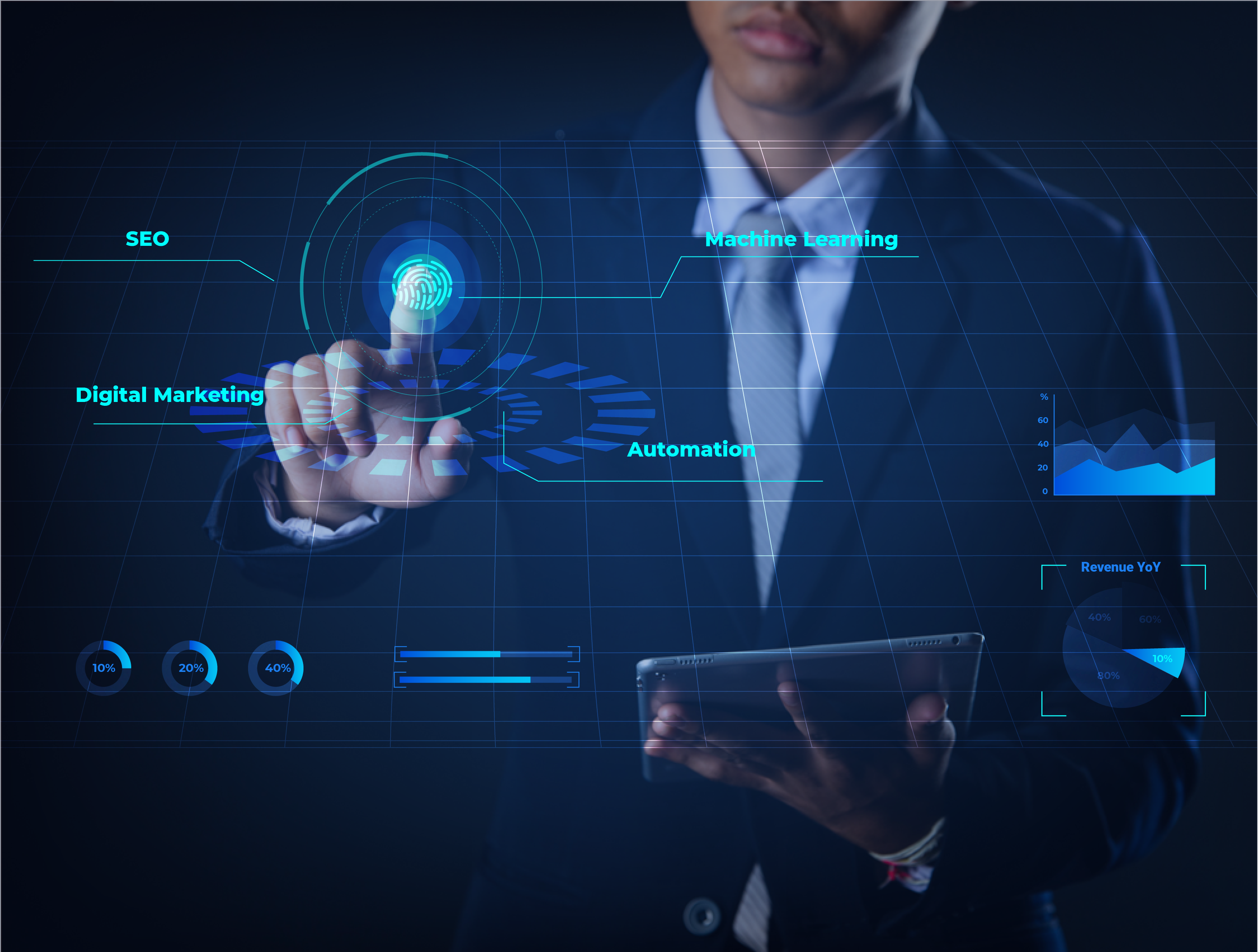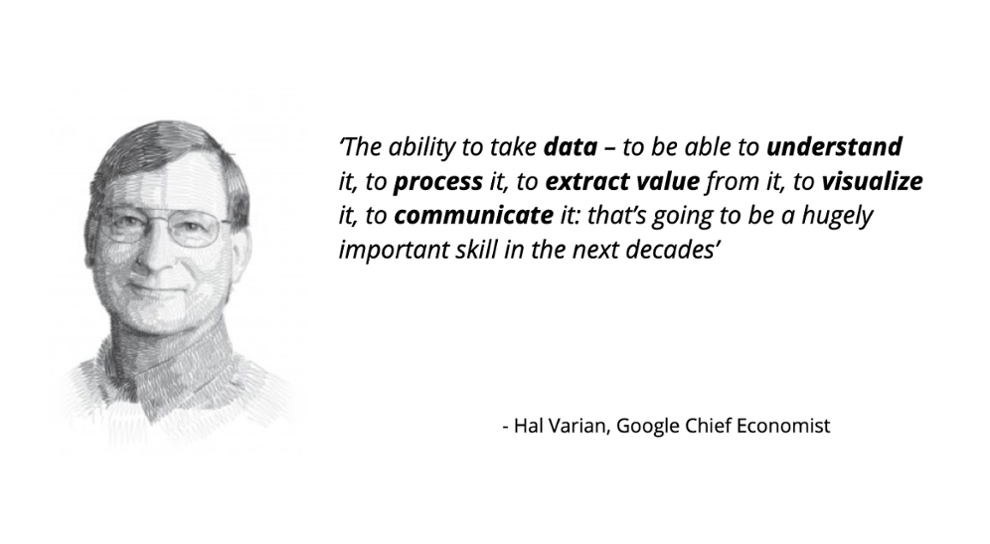

Get monthly notifications
Why AI is not enough to solve your digital marketing challenges
Everybody wants to use AI in their digital marketing, but very few understand it well. That’s every marketer’s predicament. AI is all about tackling the previously unsolvable problems in digital marketing with smart technology – and without losing the human aspect of it. But how are we ever going to start benefiting from AI and machine learning, if we don’t know how to make the best use of it?
Lots of misconceptions – and still no one understands AI fully
Every digital marketer need to manage heaps of data every day – that’s a no-brainer. But making sense of these millions of data points and then applying this learning to your business goal is another thing entirely. Lots of today’s companies and digital marketing agencies are trying to figure out how to get the most out of the new technology.
AI is still a little bit like big data was five years ago – everybody’s talking about it, very few know what it really is, or how to implement it in their business. In our minds, AI is all about chatbots, virtual assistants, voice search, and clever facial recognition – but the technology offers lots of possibilities and opportunities that no one today knows the end of.
Common misconceptions about AI involves its alleged almightiness – and that it’s going to revolutionize our digital marketing, our ecommerce and the way we interact with the world. People think it’s all about big data, that AI will solve any problem we come across in our businesses, and that wherever there’s intelligence in smart systems – AI is the underlying technique. But AI isn’t as independent or quickly adaptable as marketers might hope or media insinuate – in fact, it requires long time training and engineering to make it useful for your business and the future.
Everybody wants the Ferrari, but not everyone can drive it
Let’s draw a parallel – AI is just like a gorgeous and sought after Ferrari. Everybody wants to have a look and feel, take it for a drive, and ultimately have one in their own garage. But the Ferrari is to operate completely different if it’s me or Lewis Hamilton who’s placed behind the wheel. The car will run ever so smoothly beneath his hands, and I’d probably not even get past the first curve of the track before spinning. Or maybe, even get it started.
The point is that, in itself AI is not enough to satisfy your desires for smooth driving, or digital marketing. You need both the great technology AND the competence to run it – since AI without a clever person behind the wheel is nothing more than mere technology.

AI can help optimize to reach your goals – but you must set them
The key to understanding how to use AI for your marketing challenges is to understand retail and ecommerce first. Ask the right questions. AI cannot help sort out your different margins or the reason you lost sales. Your advertising goal depends on everything from revenue, shipping and returns to your customer retention rate – and this is something AI won’t be able to help with.
One of the biggest flaws when it comes to AI is that, no matter how smart the data processing is, you can’t ever take the human out of the game. Setting company visions, advertising and marketing goals, the expected ROI and the strategies of getting there is a task that requires the overall perspective.
When you bring your attention to find and set the strategies, you can then focus on how to leverage AI. The best way is to let AI handle every implementation of your goals and strategies. Let it set the bids for you in Google Ads as smart bidding, analyze your results from the last four Saturdays, and map out how different genders interact at different times, for example. AI is the expert on analyzing numbers and optimizing for audience reach, but it’s your job to decide in what direction.
Use AI to break down digital marketing complexity
For companies with huge ecommerces that have 400 000 different products, managing them and analyzing their performance manually is utterly and undoubtedly impossible. This is probably the primary use for AI – since it’s traditionally great for breaking down complexity and managing large amounts of data. Here, AI can help map out your top selling products or brands, find out the different conversion rates and see what ROI you get on the different items, for example.
In the overall aspect, AI should be used for implementation of new strategies and ways of expanding your reach, getting new customers and keep the current ones returning. Which one of your brands gives you the largest customer retention? What does your average order value amounts to? When asking these questions for each and every one of your brand, you can then adapt your bidding strategies or goals from these insights – setting your goal higher for less returning customers and vice versa. In perhaps 10 years, this will be something AI also can do – but for now, you are dependent on the human factor to make this happen.
5 first steps to make the best use of AI in the future of your ecommerce
-
Start with your business goals and ways of reaching them. Don’t use a technology just because it’s available, but think what elements of your business could benefit from AI and machine learning and apply it where it makes sense.
-
Learn the technology behind AI and machine learning. Review your current tools and survey the landscape to start using what you already have in new ways, instead of developing new technology.
-
Use your first-hand data and start small with your own site analytics, customer profiles or product feeds. Don’t try to do too much from the beginning, and don’t expect your first attempt to be perfect either!
-
Let the tool do its learning and have patience. AI is not a button you’ll press to solve your problems, but give the technology time to learn before expecting performance improvements.
-
Optimize your AI based on your customer's behaviors, and use it to create better experiences. Every interaction a person has with your brand provides valuable information and data, perfect fuel for machine learning and AI!
Featured Articles
The Full Funnel Approach and Pinterest
Today, we're going to delve into the significance of working with a full-funnel strategy and understanding why a comprehensive media mix is crucial. We'll also explore an example of how this approach and including Pinterest in the media mix led to a significant decrease in the cost of sales for Houdini.
Master Text Overlays: Boost Ad Engagement
In recent years, capturing the attention of your target audience has become more challenging than ever. Businesses and marketers are constantly on the lookout for innovative ways to stand out in the crowded advertising landscape.
One effective technique to draw attention to your ad's message is through the use of text overlays on image and video ads. In this blog, we will explore the best practices for incorporating text overlays, ensuring your message is impactful without compromising the visual appeal of your ads.
Similar Articles
Protect Your Facebook Business Account from Phishing: Expert Tips by Keywordio
Hello everyone, Johan here from Keywordio. Today, I want to share crucial insights into phishing—what it is and how you can safeguard your Facebook business account from this prevalent threat.
Exploring the Future of TikTok: Insights from the 2024 Trend Report
Introduction
I'm excited to delve into TikTok's comprehensive "What's Next 2024 Trend Report." This report is a treasure trove for anyone in digital marketing, offering deep insights into the future of content, storytelling, and consumer engagement on TikTok.
E-Commerce Excellence: Meta's Advantage+ Shopping Campaigns Redefined
Welcome to the dynamic world of e-commerce, where Meta's Advantage+ shopping is reshaping how businesses connect with customers. In this blog post, we'll explore the key features of this innovative tool.
Introducing TikTok Shop
Today, I bring to your attention a revolutionary update from TikTok, a platform where over 150 million Americans seek daily doses of inspiration and entertainment. With a plethora of trends, fashion hacks, beauty nuggets, and a smattering of recipes, TikTok has emerged as a modern-day oracle for curious minds. The excitement in the air thickens as we unveil TikTok Shop to the US, an avant-garde conduit for folks to spot and snag their adored items seamlessly.
The Full Funnel Approach and Pinterest
Today, we're going to delve into the significance of working with a full-funnel strategy and understanding why a comprehensive media mix is crucial. We'll also explore an example of how this approach and including Pinterest in the media mix led to a significant decrease in the cost of sales for Houdini.
Master Text Overlays: Boost Ad Engagement
In recent years, capturing the attention of your target audience has become more challenging than ever. Businesses and marketers are constantly on the lookout for innovative ways to stand out in the crowded advertising landscape.
One effective technique to draw attention to your ad's message is through the use of text overlays on image and video ads. In this blog, we will explore the best practices for incorporating text overlays, ensuring your message is impactful without compromising the visual appeal of your ads.
The Next Big Thing: 5 Digital Marketing Trends to Watch for in 2023
Digital marketing is a constantly evolving field, shaped by emerging technologies, changing consumer behaviors, and the dynamic nature of the online landscape. Staying on top of the latest trends is crucial for businesses and marketers to effectively engage with their target audience and drive growth. In this introduction, we will explore some of the key digital marketing trends that have emerged in recent times.
The Power of Branding on Meta
Are you ready to unlock unparalleled opportunities and take your online business to new heights? In a rapidly evolving digital landscape, Meta continues to revolutionize the way marketers and entrepreneurs create an impact on buyers.
Today, we will talk about the immense potential of branding on Meta's platforms, Facebook and Instagram based on our Meta Branding (Online Course). Brace yourself for insights that will empower you to establish a strong brand identity, harness consumer trends, and optimize your advertising strategies like never before! Ready to spearhead your business to success? by understanding the potential of branding on Meta and how you can tap into it. Excited? So are we - let's get into it!
A Sneak Peek into Pinterest's 2023 Product Updates!
Pinterest is improving its Ads Manager to provide a seamless experience for advertisers. New features will be released throughout 2023 to optimize advertising strategies. Pinterest aims to offer powerful tools and insights for better campaign results. Get a sneak peek into the exciting updates coming to Ads Manager this year.